Equity traders have a significant toolkit to hedge FX risk, but which strategies are proving optimum for managing currency exposure? Gill Wadsworth reports.
The great migration of equity allocations across borders has been in evidence for decades. Investors cognisant of the risks of having too many of their eggs in a domestic basket have long sought the relative refuge of global equity mandates to bring a geographic spread to their portfolios.
And so this trend continues. According to the Schroders Global Investor Insights survey 2024, 55% of pension funds expect to increase their global equity allocation, away from pure domestic holdings, for the next one to two years.
Notwithstanding the potential exposure to a dominant handful of US stocks, opting for a global equity mandate is a neat way to access overseas return, but with this return comes currency risk as FX fluctuations can significantly impact portfolio returns.
But the decision to hedge that FX risk is not always an easy one. Equity returns are inherently volatile, and currency movements often interact with them in complex ways rather than remaining independent.
From a short-term risk perspective, it might make sense to adopt low FX hedge ratios of equities from relatively safe haven areas such as the Swiss franc, Japanese yen and US dollar which tend to appreciate during periods of equity market selloffs, providing an offsetting effect. Conversely, it is theoretically optimal to apply higher hedge ratios for currencies from relatively risky regions, as they are more likely to depreciate during market downturns.
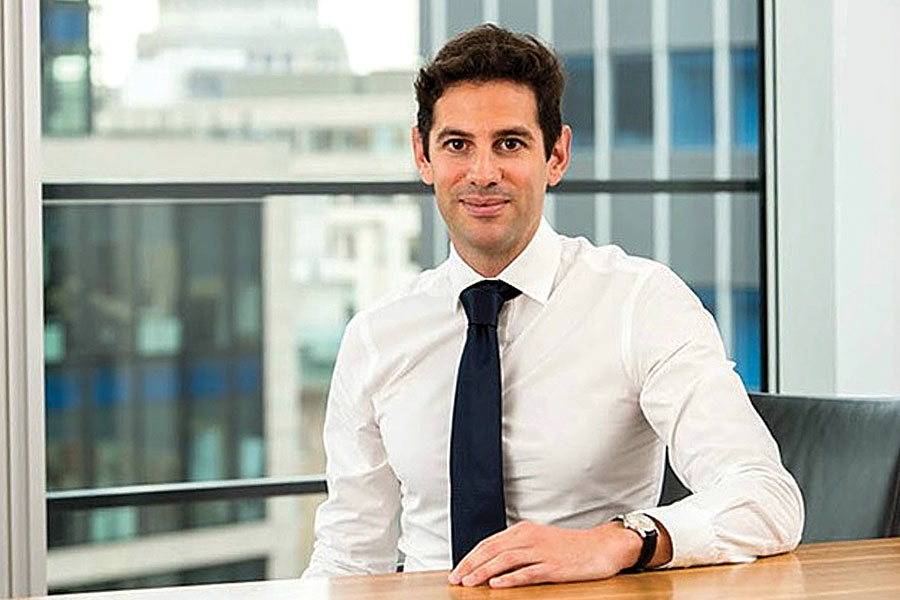
Florent Herelle, Head of Derivative Overlay, at L&G’s asset management business, says: “Typically, the currency profile – hedged or unhedged – of an equity portfolio is inherently linked to the investment objective of that particular portfolio. For example, an index fund tracking a currency hedged benchmark will currency hedge the non-domestic equity holdings according to the benchmark index methodology.”
He continues: “We find that views on currency profile typically sit at the strategic asset allocation level – such as allocating between currency unhedged and currency hedged funds – rather than the individual portfolio level. It is common for the non-domestic equity allocation to retain a proportion of currency exposure while the fixed-income allocation is typically fully currency hedged.”
Further, as an extension of managing a strategic currency profile, investors – typically global macro funds – can also view currency markets as a standalone investable source of return to generate alpha.
Specialist support
Managing FX risk in-house requires significant expertise, and while strategies will be fully tailored and the buy side has full oversight and control, they can be a considerable operational burden to maintain.
For some buy-side traders it makes sense to outsource FX hedging to providers offering forward and options execution, currency overlay and custom hedging, leaving them to get on with the business of managing the stocks.
A 2024 State Street survey reveals that while fewer than one-fifth (18%) of global institutional investors currently outsource FX trading, almost three-quarters (73%) plan to do so in future.
Specialist currency overlay managers offer dedicated teams with expertise in FX dynamics, monetary policy analysis and hedging instruments. And they have access to advanced technology, algorithms and real-time data for efficient execution.
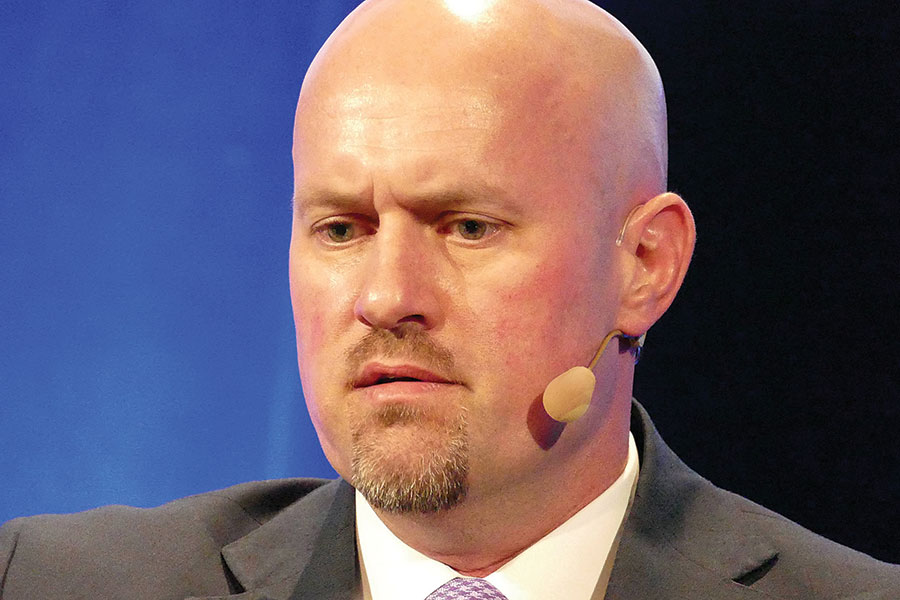
Jason Lenzo, Managing Director & Global Head of Trading, Russell Investments, says: “When currency hedging global equity portfolios, the choice of currency hedge ratio can be more complex than when currency hedging fixed income portfolios. Understanding embedded currency exposure in global equity portfolios and understanding the correlations between foreign equity prices and exchange rates is critical in determining optimal hedge ratios. We have developed tools to conduct this analysis as clients continue to ask for guidance in this area.”
Meanwhile Marcus Fernandes, Global Head of Currency Management, Banking & Markets at Northern Trust, adds: “We have very large clients, so efficiency is a big driver of what defines an optimal [FX hedging] solution. Hedging FX risk across portfolios with large and varied holdings requires seamless data-capture and operations as well as access to liquidity.”
Fernandes says he sees a strong demand for tech-led products with automation driving scale alongside strong real-time transparency, where clients value the ability to monitor the hedges as we manage them.
Paying it forward
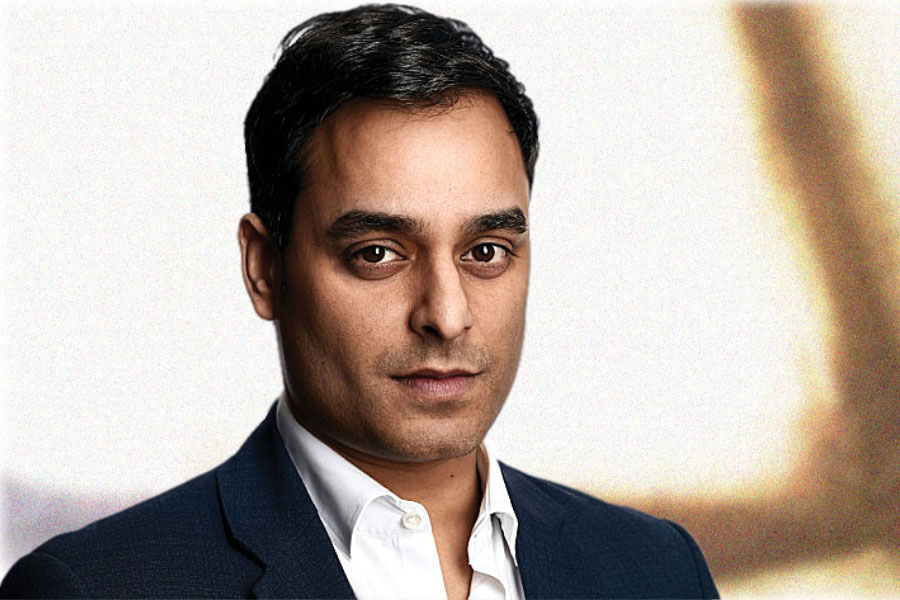
Derivatives play an important role in FX hedging. “We operate in the FX forward and spot markets, which are some of the deepest markets out there,” Fernades says. “These more vanilla instruments allow for efficiencies of scale when operating in size as well as lower volatility risks from having fewer moving parts.”
Forwards are a key part of the FX hedging toolkit at Schroders FX Solutions, where traders have an eye on cost efficiencies and tailored strategies. Forwards usually have no upfront premium to pay and execution costs are built into the spread, making them more cost effective than options.
Darren Bustin, Global Head of Solutions Capabilities and Insurance Capabilities at Schroders Solutions, says: “We aim to implement currency hedging programmes using liquid and cost-effective instruments. FX forwards and cross-currency swaps are the primary derivative products used to reduce foreign-exchange risk.”
He continues: “In an increasing number of situations, FX options are utilised to tailor hedges that align more closely with clients’ currency expectations and risk tolerances. Notably, to hedge illiquid private assets, we observe widespread use of FX forwards rolled at historical rates. This approach minimises the portfolio’s need for substantial cash holdings, thereby reducing the drag of such cash on performance.”
For buy-side managers that hedge FX risk in house, futures and forwards are no less important but traders obviously rely on their own internal expertise to run the strategies.
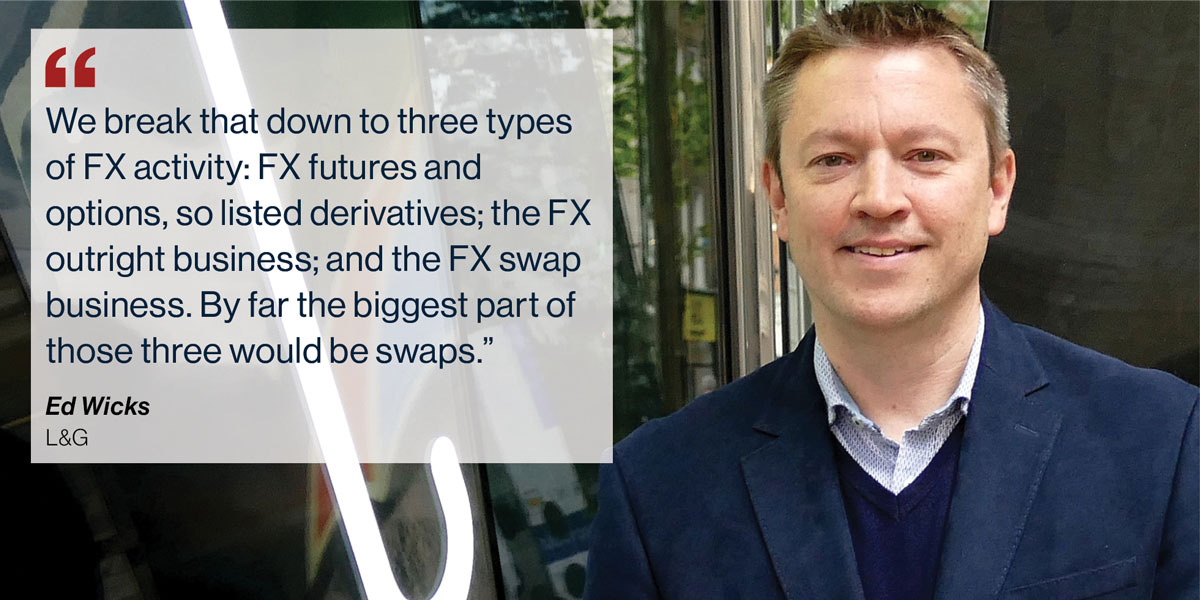
Ed Wicks, Global Head of Trading and Liquidity Management at L&G’s asset management business, says the business offers 24-hour coverage for the portfolio management five days a week, executing approximately £7 trillion across all asset classes, of which £1 trillion is FX related activity.
“We break that down to three types of FX activity: FX futures and options, so listed derivatives; the FX outright business; and the FX swap business. By far the biggest part of those three would be swaps, followed by the outright business, and then the futures business,” Wicks explains.
The outright FX business focuses on forwards, which Wicks says typically are executed via an algorithmic execution channel, leveraging broker provided algorithms. “Or we may want to transfer the risk more quickly, in which case we would use RFQ,” Wicks adds.
Meanwhile, Elke Wenzler, Head of Multi-Asset Trading Desk at MEAG, a Munich Re company with €347 billion under management where 30% of the equity portfolio is non-euro denominated, says her portfolio managers look at FX risk holistically across all asset classes.
“We are a very active, very FX intensive business which is why we don’t outsource.” She continues: “We use forwards and a lot of options as well, which distinguishes us from others.”
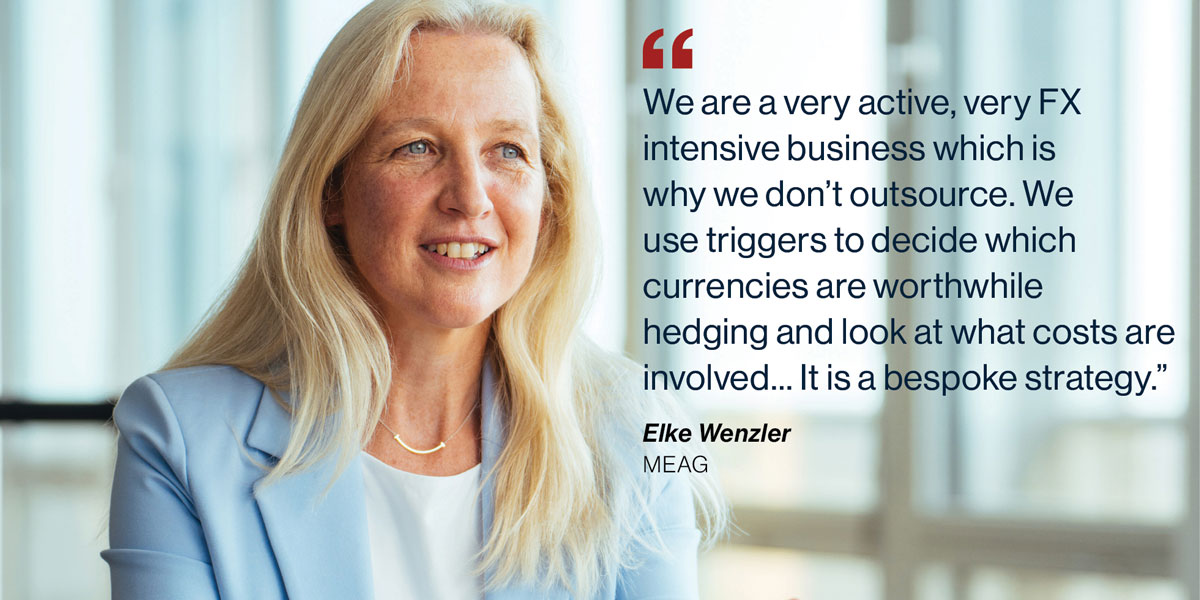
Wenzler explains that MEAG combines plain vanilla options with forwards to manage FX risk across different currencies depending on the available risk budget. “We use triggers to decide which currencies are worthwhile hedging and look at what costs are involved. And then we use technical analysis to understand the market circumstances and the current risk appetite of the mandate. It is a bespoke strategy,” she says.
Technology driven
Irrespective of whether the FX is outsourced or traded inhouse, the latest technology is essential in delivering best execution.
Technological advancements have made FX hedging more precise, cost-effective and transparent. Automation, AI and advanced data analytics allow global equity investors to manage currency risk with greater speed, accuracy and scalability.

Bustin says: “Technology and automation are both key to operationally scale Schroders’ capabilities in implementing FX hedging strategies. Our ability to trade FX efficiently and efficaciously is a function of our group investment into systems and implementing straight-through processes (STP) to reduce both time and risk.”
STP in FX trading is evolving rapidly, with automation, AI, and cloud computing driving major improvements. These technologies enhance efficiency, reduce risk, and ensure that FX trades flow seamlessly from order to settlement. As more players adopt advanced STP systems, the FX market is becoming faster, safer, and more transparent.
Wenzler says: “STP significantly reduces the risks in the trading process. Options trading was always a very bespoke scene between client and counterpart, and now we have a much better and safer approach using STP.”
Wicks agrees that technology is a “huge part of all of what we do across all asset classes, including FX”. He adds: “We leverage automation technologies through our execution management systems, so low value orders can be identified, the benchmark can be identified, and they can be automatically routed to an appropriate venue and then automatically booked once they’ve been filled.”
Wicks notes that given the size of L&G’s asset management business, it operates three different trading systems which means it can avoid the major inconvenience should anything go wrong.
“We have access to three different trading systems for FX. A primary trading system, which is where the majority of our flow goes, a secondary system for backup and – given the size of our business – we maintain a third to secure operational resilience.”
Technology is also critical for Northen Trust which, like L&G, is responsible for trillions worth of assets.
Fernandes says: “The sheer size and trading volume in currency markets means that technology has a massive impact on the solutions we can provide. We are a large-scale aggregator of data in currency management, and volatility increases the potential for errors in the data. Our global technology platform enables a level of oversight, risk management and automation that was not possible a number of years ago.”
He says outsourced providers can offer different levels of automation, to match the needs of their clients, adding: “Along with technology, it’s also important to provide clients the expertise to guide them through the process of digitising, automating and optimising their FX operations.”
As FX hedging evolves from a simple execution exercise to one that offers strategic benefits, so traders need a blend of technology expertise, data-driven insights and collaborative decision-making. Whether hedging in-house or outsourcing to third-party specialists, those who can leverage automation, integrate advanced analytics and align FX strategies with broader portfolio goals deliver optimum outcomes.

